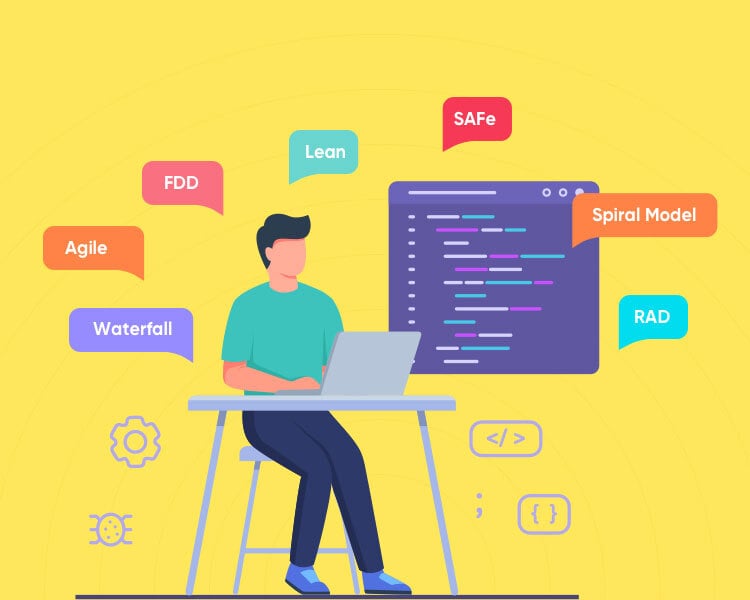The realm of software development is characterized by a myriad of methodologies, each offering unique approaches to manage the intricate process of crafting software products. Selecting the most appropriate methodology is a critical decision that can significantly impact project outcomes. This comparative analysis delves into some of the preeminent methodologies employed within the software engineering domain, highlighting their respective strengths and limitations.

Agile Methodology
Agile methodologies have revolutionized software development by promoting adaptive planning, evolutionary development, and delivery in rapid iterations. Agile fosters a collaborative approach between development teams and stakeholders, enabling continuous integration and encouraging feedback loops. Through the use of sprints, Agile teams aim to deliver functional software increments in short cycles, thereby allowing projects to evolve in response to changing requirements.
Advantages:
Flexibility: Permits adjustments throughout the development lifecycle.
Customer Collaboration: Places a premium on customer involvement and feedback.
Rapid Delivery: Aims for early and continuous delivery of working software.
Disadvantages:
Overhead: Requires ongoing planning and communication efforts.
Scalability: May face challenges with large-scale or highly regulated projects.
Scrum
Scrum is an empirical process control framework within the Agile paradigm that emphasizes team collaboration, accountability, and transparency. It employs a defined set of roles, events, and artifacts to ensure that work is delivered in a sustainable and predictable manner. The Scrum process is facilitated by a Scrum Master who works to remove impediments and ensures that the team adheres to Scrum principles and practices.
Advantages:
Team Empowerment: Encourages self-organizing teams with a high degree of autonomy.
Transparency: The Scrum board provides a visual representation of progress.
Regular Inspection: Sprint reviews and retrospectives allow for constant process improvement.
Disadvantages:
Complexity: Implementation requires expertise and discipline.
Dedicated Resources: Expects full commitment from team members to the Scrum framework.
DevOps
DevOps is not a development methodology per se but rather a cultural movement that aims to integrate development and operations. It emphasizes the automation of deployment pipelines, infrastructure as code, and continuous monitoring to improve collaboration and accelerate delivery cycles. DevOps practices are complementary to any chosen software development methodology and can significantly enhance efficiency and quality.
Advantages:
Collaborative Culture: Promotes close collaboration between previously siloed departments.
Automation: Reduces manual errors and increases speed through automation.
Continuous Integration/Continuous Deployment (CI/CD): Leads to faster release cycles and improved product quality.
Disadvantages:
Initial Investment: Requires upfront investment in tools and infrastructure.
Skill Set: Necessitates specialized knowledge in automation, CI/CD tools, and infrastructure management.

Waterfall Model
The Waterfall model, one of the earliest methodologies, is grounded in a linear and sequential approach to development. It segmented the software development process into discrete phases, including requirements gathering, system and software design, implementation, testing, deployment, and maintenance. This strict adherence to a predetermined order provides structure and facilitates comprehensive documentation. However, the inflexibility inherent in the Waterfall model precludes iterative development and does not accommodate for changes post-initiation of a particular phase without significant repercussions.
Advantages:
Predictability: Offers a clear timeline and project management framework.
Documentation: Encourages thorough documentation, which aids in future reference and maintenance.
Structure: Provides a rigid step-by-step guide that is simple to understand and implement.
Disadvantages:
Inflexibility: Inherent resistance to change once a phase has commenced.
Risk Mitigation: Risks are often not identified until later stages, leading to costly amendments.
Stakeholder Engagement: Limited opportunities for customer feedback until later stages.
Kanban
Kanban is a visual system for managing work that emphasizes the limitation of work-in-progress (WIP) and the continuous flow of tasks. It uses a board with columns representing different stages of work, allowing teams to easily track tasks and make informed decisions about resource allocation. Kanban is particularly effective for organizations dealing with high volumes of work and demand for continuous delivery.
Advantages:
Visibility: Enhanced visibility of work status and bottlenecks.
Efficiency: Promotes efficiency by limiting WIP and ensuring steady workflow.
Adaptability: Allows teams to adjust to changing priorities and demands.
Disadvantages:
Lack of Predictability: Does not guarantee fixed delivery dates.
Implementation Challenge: May require significant cultural and operational shift
Lean Software Development
Inspired by the Toyota Production System, Lean software development focuses on value creation and the elimination of waste. It advocates for the identification and streamlining of value streams to reduce defects, delays, and other forms of waste. Lean encourages continuous improvement through feedback mechanisms and the standardization of processes.
Advantages:
Efficiency: Targets the reduction of waste and improvement of value-creating activities.
Continuous Improvement: Fosters a culture of relentless improvement.
Value Stream Mapping: Helps identify areas of improvement through detailed mapping of workflows.
Disadvantages:
Cultural Shift: Requires a cultural lean transformation that may be challenging to achieve.
Discipline: Demands discipline to maintain lean practices and prevent backsliding.
In selecting a methodology, it is essential to consider the nature of the project, the team’s experience, the need for flexibility, and the level of customer engagement required. Each methodology presents a unique set of advantages and disadvantages, and the optimal approach often involves blending methodologies or adopting a hybrid approach tailored to the specific needs of the project at hand. By understanding these nuances, teams can make informed decisions that will ultimately contribute to successful software development endeavors.



